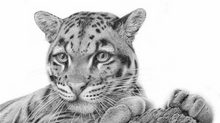Photographing wildlife...
- Jon Isaacs
- Mar 16, 2021
- 4 min read
Updated: May 24, 2024
The Long Stand. By Jon Isaacs
Wildlife photographers need many qualities if they are to obtain good photographs. Near the top of the list are patience and persistence. Patience may well be a virtue but when it comes to photographing wildlife it is a necessity. Persistence or, with me, pure stubbornness is equally important.

Many wildlife photographers have a wish list of subjects, animal behaviour or situations they wish to capture. Sometimes they achieve their shot with the minimum of effort or perhaps a slice of luck. On other occasions the shot can be tantalizingly close or never achieved. I was in a game reserve with my friend and professional photographer Marc when he finally got the shot of a cheetah family, rim lit by the rays of the early morning sun, watching a herd of antelope pass by. It took him four years to get that shot.
For me, it is often the zoo shots that take the most time. On safari I have a limited number of game drives to get what I want but in a zoo, with a captive animal, it is more often a case of going back and back until I hopefully get the shot I’ve envisaged.
Such was the situation with Niari, the baby okapi, born at Marwell zoo in April 2019. The okapi is a weird but strikingly beautiful animal from the Congo in Africa. With a head and tongue similar to a giraffe's and a body like a horse’s, with the leg stripes of a zebra, it’s not surprising that the animal wasn’t even recognized as a species until 1901. It is classified as endangered, lives a solitary existence in deep jungle and, although probably existing in reasonable numbers, is extremely hard to see in the wild or to breed in zoos. A zoo breeding an okapi is a big event and I was keen to get a shot of one running, which I felt only an exuberant youngster might do. That’s how the “Long stand” started

I visited Marwell within a week of the birth and made my way up to the okapi house. There was a chain across the entrance with a no admittance sign. I wasn’t surprised as the okapi are a very nervous species who can’t tolerate noise. Even in normal times, visitors are asked to be quiet. I was back a week later. Same arrangement but I did manage to talk to a keeper who said Niari (Which means rare) was bonding well with her mother Daphne. The calf was very nervous but the signs seemed positive.
Several weeks later the chain had been removed and the house was open to the public. The media had already been invited to see Niari when she made a brief outing on to the hardstanding, and photos of her were everywhere in the press. I entered the building to see lots of extra signs asking the public to be quiet. Niari was apparently behind a partition, lying on a huge bed of straw. She was in her nesting period. This replicated life in the wild where a calf is left in a safe spot until the mother returned to feed it. Over several visits and hours spent in the okapi house, Niari remained out of view. During this period Niari didn’t deficate although I’ve no idea how she could take in food at one end without it coming out at the other. This was again normal behaviour and should typically have lasted between thirty and forty days. With Niari, it took sixty-five. This was something of a record.
Niari continued to rapidly put on weight and size until she was at least half the size of Daphne. We were into late July before I finally managed to see her in the house. She looked beautiful, with large lustrous eyes, huge fringed ears and what looked like fetching leggings. But would she ever go outside?

I continued to visit on a weekly basis, always making a beeline for the paddock where I was willing her to go and run. In the middle of August came the news that she had finally gone there, at 7.30 a.m. way before the zoo opened. I was getting closer. My routine changed to standing on the path above the paddock for an hour and then going for a walkabout before returning to do another hour or more. I began to wonder if Niari hated the paddock or maybe okapi just didn’t run. After all, could you run in a dense forest?
The 29th of August broke with a clear, sunny sky. As usual I made my way to the paddock. She was finally out with Daphne. More importantly, she was skittish. Within minutes of setting up my kit with nobody else around, she was thundering around the paddock like a racehorse. Her hooves thundered on the dried ground. Backwards and forwards she ran and even Daphne broke into a gentle trot. Multiple shots were taken of her careering around. I had achieved the shots I had wanted for so long. Patience and persistence had won the day. I entered one of the shots in the Marwell calendar competition for 2021. It was chosen and became the April entry. I hope people enjoy looking at it, although I doubt that they realize what an effort it took to get it.














































Comments